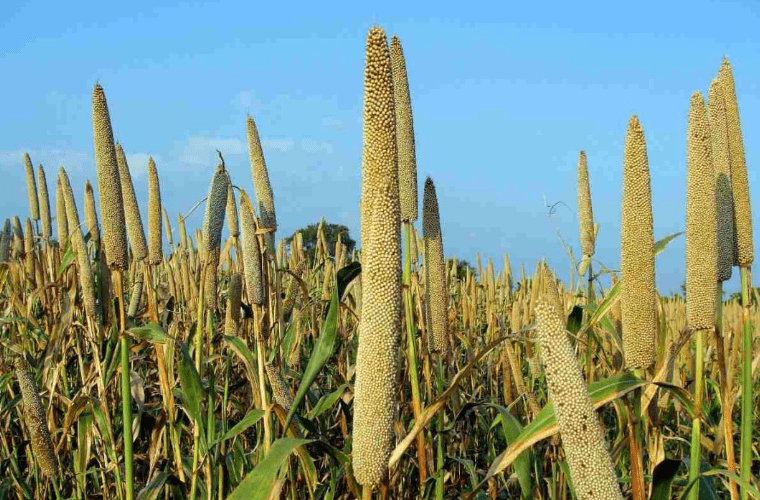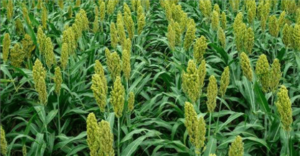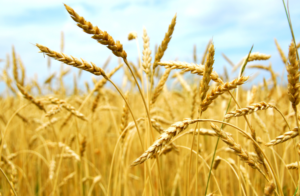
Scientific name= Pennisetum glaucum
Origin= India
v Area Distribution=
· In all over world:
Africa, Asia, India, China, Nigeria, Pakistan, Sudan, Egypt, Arabia, and Russia etc.
· In India:
Rajasthan, Maharashtra, Uttar Pradesh, Gujarat, Haryana etc.
v Varieties:
· KBH108, GHB905, 86M89, MPMH17, Kaveri Super Boss, Bio 448, MP7872, MP7792 etc.
v Importance=
· Pearl millet is important millet of India, second to sorghum in area and production.
· In south India, crop is called as Sajje or Cumbu and in Hindi it is known as bajra.
· It is also known as cattail millet or bulrush millet.
· It is one of the coarse grain crops
· It is one of the coarse grain crops and is considered to be poor man food.
· It is important crop in arid regions of Africa and Asia.
· It is the most drought tolerant crop among cereals and millets.
· Bajra grains are eaten cooked like rice or chapattis are prepared out of flour like maize or sorghum flour.
· It is also used as feed for poultry and green fodder or dry for cattle.
· It survives well in condition of soil moisture stress as well as water logging and performs better than sorghum.
Source of content: 61.pdf (justagriculture.in)
v Nutritional value:
· Protein: 11.6%
· Fat: 5%
· Carbohydrates: 67%
· Minerals: 2.7
v Cultivation Practices:
A. Soil Requirement:
· Well- drained, Loamy soils that are not acidic or saline soils.
B. Climatic requirement:
· Pearl millet is important forage climate grown over a wide range of soils.
C. Sowing time:
· Middle to last week of July month.
D. Spacing:
· Row to row spacing: 40-45 cm
· Plant to plant spacing: 10-15 cm
E. Seed rate: 10-12 kg/ha.
A. Field Preparation:
· One ploughing followed by two (crosswise) harrowing and planking.
B. Irrigation practices:
· July sown rainy season crop may also need 1-2 irrigation depending upon distribution of rains.
· For summer sown crop 4-5 irrigation are required.
· In rabi season crop need about irrigation.
Source of content: Pearl millet.pdf (icar.gov.in)
C. Nutrient and fertilizer management:
· FYM: 150-200 q./ha.
· N:P: K: 100:50:50 kg/ha.
· Apply potassium, phosphorus and magnesium according to soil tests as recommended for grain.
· Apply fertilizer at planting and the remaining about 3-4 weeks after planting.
· Apply 80-100 pounds of nitrogen per acre in soils with a clay pan as per requirements.
D. Weed Control methods:
Chemical method
Following some herbicides use to control weeds:
· Atrazine@0.50kg/ha. Use as pre and post -emergence.
· 2, 4-D@0.25-0.75kg/ha. Use as post emergence.
· Pendimethalin@0.50-0.75kg/ha. Use as pre-emergence.
· Oxadiazone@1.0kg/ha. Use as pre-emergence.
Source of content: View of Weed management in millets (icar.org.in)
A. Harvesting:
· The usual practice of harvesting pearl millet is cutting the ear heads first and the stalks later.
· The stalks (straw) are cut after a week, allowed to dry and then stacked.
· Grain at or below 14% moisture is considered dry.
· For long-term storage (more than 6 months), grain moisture content should be less than 12%.
Source of content: Recommended_package_of_practices-Pearl_millet.pdf (millets.res.in)
B. Yield: 3-4 ton/ha
Other agronomy crops links:
Wheat crop: WHEAT CROP | agriculturestudymaterial
Rice crop: RICE CROP | agriculturestudymaterial
Sorghum Crop: SORGHUM CROP (Jowar) | agriculturestudymaterial
Wheat Crop: WHEAT CROP | agriculturestudymaterial



